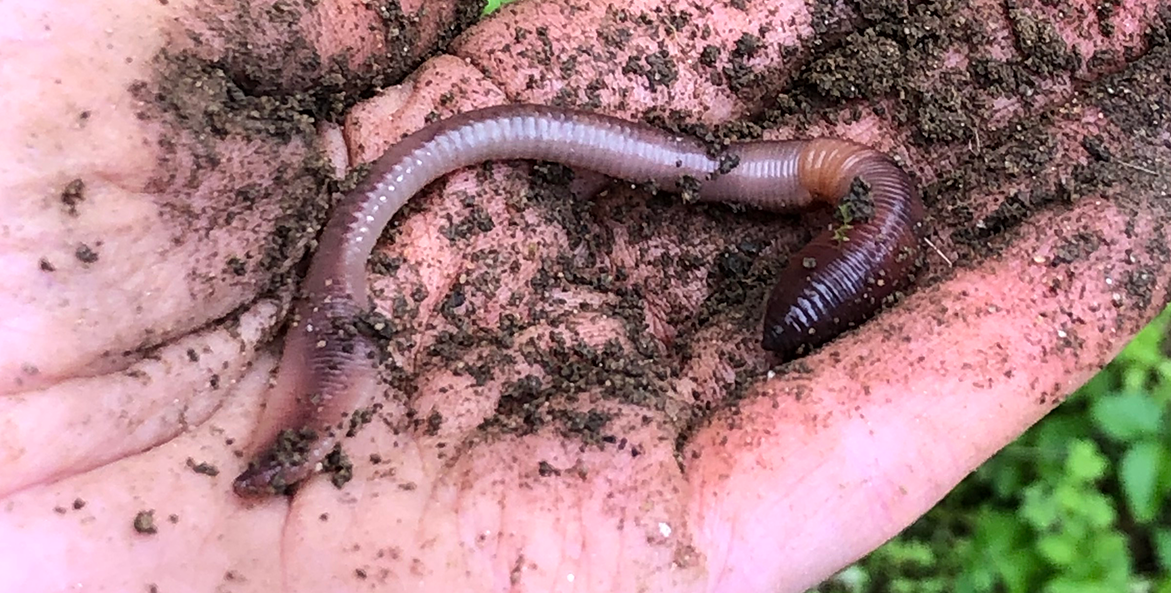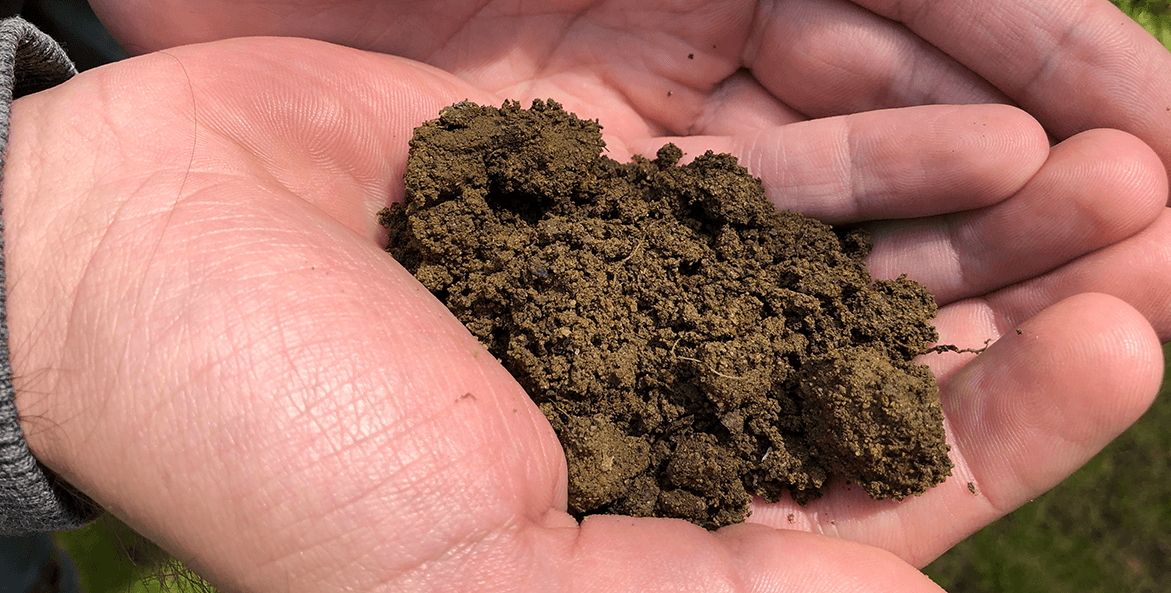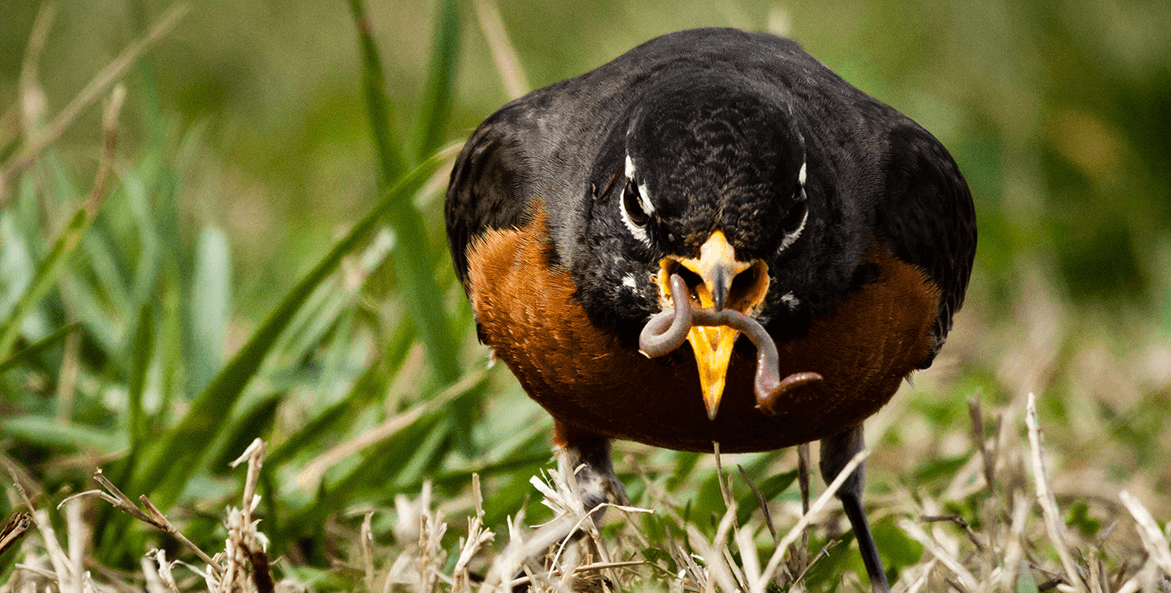Earthworms are one of those simple elements of nature with the power to totally mesmerize. Like fires. Or waves. Anyone who's plucked a plump nightcrawler from a bed of dark soil (maybe en route to a favorite fishing hole) knows they're stronger and faster than they look—determined to bolt back into the dirt.
So, maybe it was their innate charisma, that when I uncovered half a dozen earthworms while attempting to plant a short row of peas along my back fence earlier this month, I wanted to know more. Why so many in such a small area? Was my yard, usually in some state of benign neglect, actually prime worm habitat? What did it all mean?
Turns out, my one question about worms opened up a whole can. On the surface, the answer was pretty simple: I was seeing more worms simply because May is a very active month for earthworms in the Bay watershed. The soil warms up, spring rains add moisture, and the worms are busy producing the cocoons that hold their eggs.

There are more than 1,000 species of earthworms, some that live in the top few inches of soil, and others that burrow as deep as five or six feet into the ground.
Codi Yeager
But the worms are also a window into something much bigger: the health of the soil.
We talk a lot about soil health at CBF because healthy soils lead to better water quality.
"Healthy soils will infiltrate more water than unhealthy soil," Beth McGee, CBF's Director of Science and Agricultural Policy, told me. "From a water quality perspective, that means if there's a big rainstorm, the water is soaking into the soil as opposed to running off."
Since runoff from storms carries sediment and nutrients, like nitrogen and phosphorus, the more runoff soils can soak in, the fewer pollutants reach nearby streams and the Bay. Farmers and gardeners with healthy soils benefit, too.
Not tilling the soil and planting cover crops are two strategies farmers use to improve filtration and keep soil on the land instead of the water.
"When the soil is soaking in and storing more water, it's more resilient to weather extremes—whether you get two inches of rain in 24 hours, or no rain in two months," McGee said. "Healthy soils also do a better job of cycling nutrients. You don't need to add as many nutrients because your soil is mobilizing the nutrients for you."

There’s more to dirt than meets the eye. Healthy soils cycle nutrients and soak in water, helping farmers, gardeners, and water quality.
Codi Yeager
Less need for fertilizer, keeping soil on the land, and better ability to withstand droughts and heavy rains—sounds great! But how do you know if your soil is healthy? You can send soil samples to be analyzed in a lab, but there are also some basic tests you can do at home to get a rough idea of your soil's health, McGee said. For example:
- Organic Matter — Take a sample from the top layer of your soil. If it's dry, moisten it with a little water, then look at the color. Dark soil with visible organic matter—things like pieces of decomposing leaves or grass—is an indicator of healthier soil. Light-colored, dull soil with no visible organic matter suggests poor-quality soil.
- Earthworms and Macroinvertebrates — Take a shovel of topsoil, then gently separate it to look for worms and other macroinvertebrates like grubs and spiders. A high number of critters, and evidence of their burrows, indicates healthier soil. Few or no worms, and little evidence of their burrows, is an indication of less-healthy soil.
- Soil Odor — Cup some soil in your hands and hold it near your nose. If it smells sweet and earthy, the soil is healthier. If it smells metallic, sour, or rotten, it's likely the soil is unhealthy.
- Infiltration — Observe the soil after a rainfall, or dig a small, flat-bottomed hole and pour about an inch of water into it. See how long it takes the water to soak into the ground completely. While different soil types will absorb water differently, generally, if the water drains well and there is little ponding, the soil is healthier. If the water drains slowly and creates standing pools, it indicates poor soil health.
(Note: these indicators were adapted from the Maryland Natural Resources Conservation Service's Soil Health Card and Penn State Extension's Soil Quality Assessment Worksheet.)
And, if you really want to get hooked on soil health, you can watch our recent Ask an Expert video on regenerative agriculture and learn more about CBF's work to help farmers across the watershed implement farming practices that benefit water quality, improve soil health, and boost farm economies. For example, the Mountains-to-Bay Grazing Alliance aims to convert 1,700 acres of farmland to rotational grazing by 2021, and CBF and our partners are launching the "Million Acre Challenge" in Maryland to implement regenerative agriculture practices on one million acres of farmland by 2029. In addition, we continue to help farmers plant forested buffers that protect and shade streams.
For more happenings on the Bay this month see our Chesapeake Almanac podcast.




